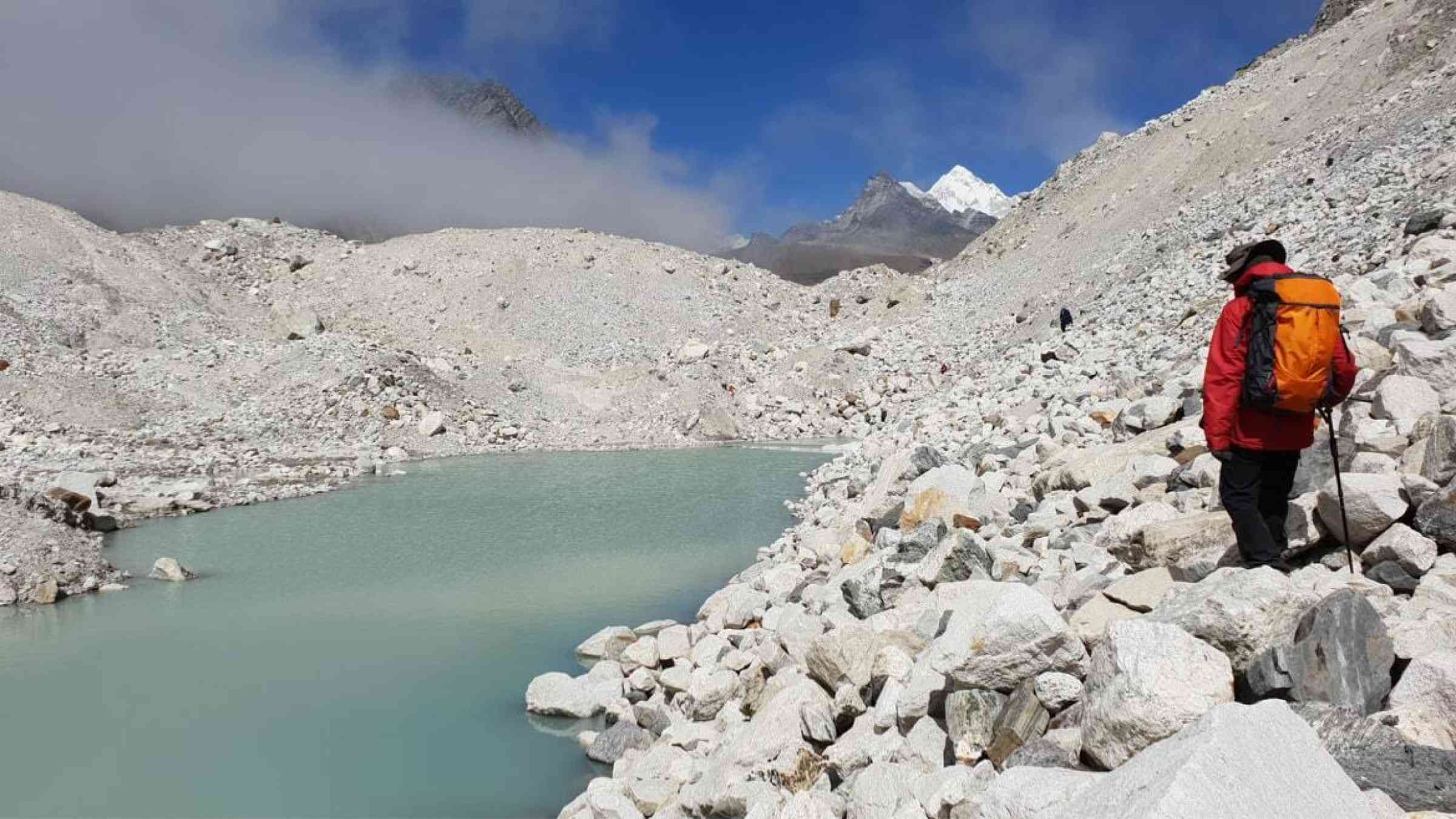Please help us improve PreventionWeb by taking this brief survey. Your input will allow us to better serve the needs of the DRR community.
Findings and learnings from the WeACT project in the Upper Koshi Basin

Glacial Lake Outburst Floods (GLOFs) are one of the most serious natural hazards in mountain regions, including the Upper Koshi Basin. GLOFs are becoming frequent due to climate warming and with increasing development of roads, hydropower stations, and settlements, there is also a larger impact of these outburst floods downstream.
With our partners Loughborough University, Tribhuvan University, and Newcastle University, we organised a workshop on 18 May 2022 to disseminate findings from the Web-based Natural Dam-Burst Flood Hazard Assessment and Forecasting System (WeACT) project and demonstrate the web-based tools on potential GLOF modelling and hazard assessment. The WeACT project explored the potential of using the latest remote sensing and dam-break flood modelling technologies to develop an innovative web-based GLOF hazard assessment that could improve community flood preparedness and resilience in Nepal. ICIMOD was the project partner and principal investigator for the fieldwork and joint publications under the project.
The speakers at the workshop highlighted the importance of the tools and methods to understand the changing risks from GLOFs. The workshop also emphasised the importance of the systems, methods, and guidelines to understand GLOF risks for technical professionals and other key stakeholders, especially when designing climate resilient infrastructure.
Findings from Tsho Rolpa
Researchers discussed findings from the WeACT project, which was tested in one of the potentially dangerous glacial lakes (PDGLs) in Nepal – Tsho Rolpa, located at 4550 masl in Rolwaling valley, Nepal. The researchers used multi-scale and multi-model remote sensing techniques to map and monitor the lake and its surroundings.
The study found that the glacier was retreating at a high rate, sometimes up to approx. 1m/day during the monsoon season in 2019. Considering the risks of hazards resulting from the development of glacial lakes as a result of glacier retreat, the researchers also identified different tools to better understand GLOF scenarios. For example, the researchers found that an adapted dam breach approximation model can consider GLOF scenarios to estimate outflow hydrographs. Similarly, the High Performance Integrated Hydrodynamic Modelling System (HiPIMS) can predict the resulting GLOFs at a high resolution to reflect the highly transient flood hydrodynamics. Additionally, open-source data from multiple sources can provide exposure datasets.
Glacial lakes connected to glaciers in the region are expanding rapidly with increases in glacier melt due to warming. Hence, the study indicates that the lake will require frequent monitoring at 5 to 10-year intervals and suggests that similar studies be conducted in other fast growing glacial lakes in the region.
Key learnings
One of the key learnings from the project was the importance of placing community participation at the centre of the activities. The project aimed to integrate local knowledge, and foster joint engagement of different institutions for mapping, assessment, and mitigation/adaptation plan development. The presenters highlighted the importance of sensitising community regarding GLOF threats to encourage participation and leadership in adaptation activities.
The workshop also had participants from various sectors to help identify and discuss how technologies such as the web-based platforms can be integrated with communities to enhance their resilience against hazards like GLOFs.
The field investigation and its outcomes and interactions with stakeholders emphasised how GLOFs are becoming more frequent due to climate warning. This further reiterates that systematic monitoring of the PDGLs is crucial, along with the importance of setting up early warning systems in flood prone downstream areas while simultaneously enhancing community awareness on the risks of GLOFs.
Standardising GLOF hazard and risk assessments
As the risks of GLOFs has increased in the region, it is imperative that GLOF hazards lakes are identified, assessed, and monitored. The workshop also discussed how to standardise the GLOF risk assessment methodology developed by the National Disaster Risk Reduction & Management Authority (NDRRMA), Nepal and the Koshi River Basin Initiative. The interdisciplinary methodology assesses the lake hazards and risks posed by potential GLOFs and aims to support practitioners and decision makers in devising ways for better disaster preparedness. The participants provided inputs to the methodology and suggested enhancing social and economic parameters.
Explore further
Please note: Content is displayed as last posted by a PreventionWeb community member or editor. The views expressed therein are not necessarily those of UNDRR, PreventionWeb, or its sponsors. See our terms of use
Is this page useful?
Yes No Report an issue on this pageThank you. If you have 2 minutes, we would benefit from additional feedback (link opens in a new window).